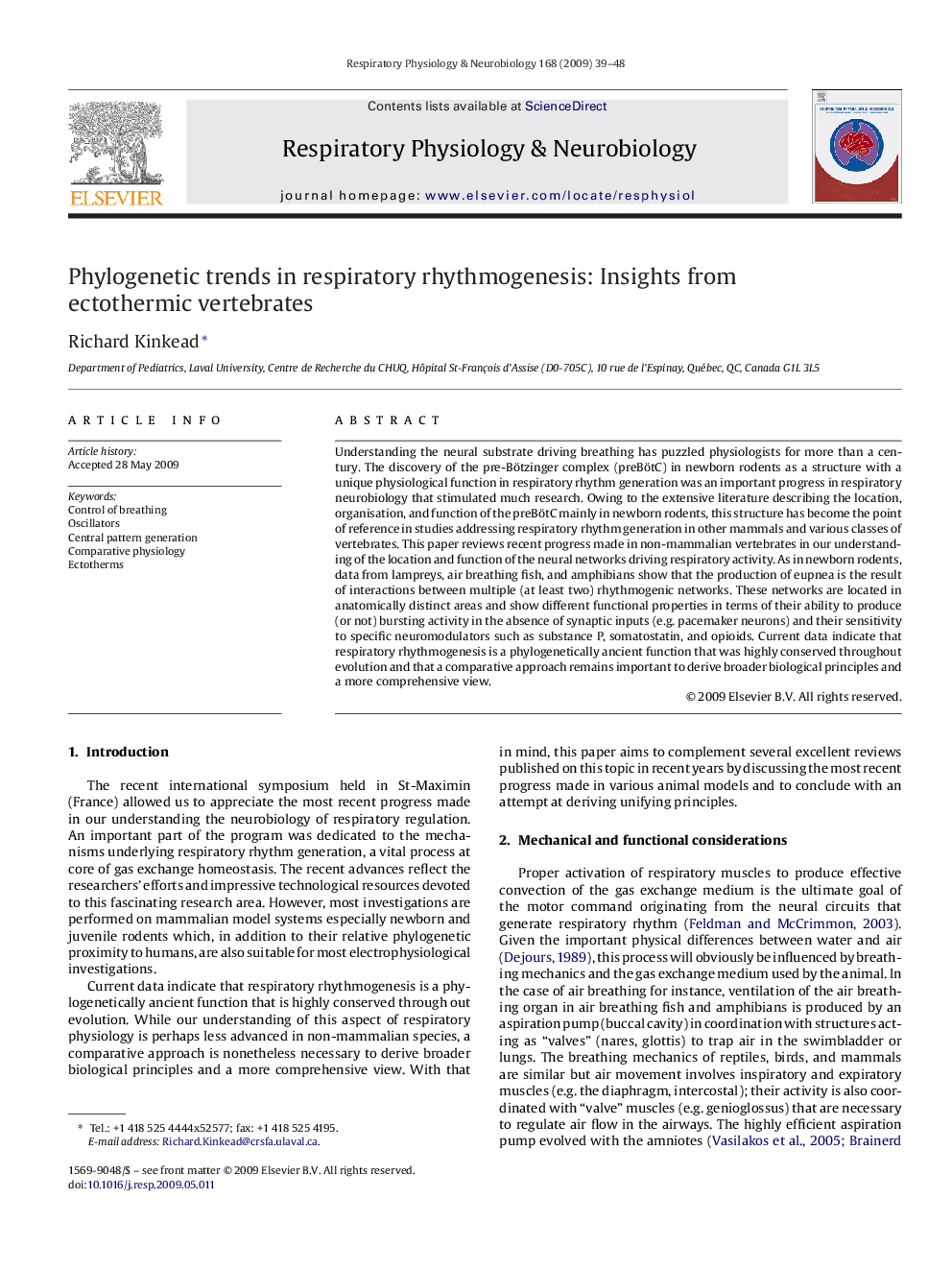| Article ID | Journal | Published Year | Pages | File Type |
|---|---|---|---|---|
| 2847763 | Respiratory Physiology & Neurobiology | 2009 | 10 Pages |
Understanding the neural substrate driving breathing has puzzled physiologists for more than a century. The discovery of the pre-Bötzinger complex (preBötC) in newborn rodents as a structure with a unique physiological function in respiratory rhythm generation was an important progress in respiratory neurobiology that stimulated much research. Owing to the extensive literature describing the location, organisation, and function of the preBötC mainly in newborn rodents, this structure has become the point of reference in studies addressing respiratory rhythm generation in other mammals and various classes of vertebrates. This paper reviews recent progress made in non-mammalian vertebrates in our understanding of the location and function of the neural networks driving respiratory activity. As in newborn rodents, data from lampreys, air breathing fish, and amphibians show that the production of eupnea is the result of interactions between multiple (at least two) rhythmogenic networks. These networks are located in anatomically distinct areas and show different functional properties in terms of their ability to produce (or not) bursting activity in the absence of synaptic inputs (e.g. pacemaker neurons) and their sensitivity to specific neuromodulators such as substance P, somatostatin, and opioids. Current data indicate that respiratory rhythmogenesis is a phylogenetically ancient function that was highly conserved throughout evolution and that a comparative approach remains important to derive broader biological principles and a more comprehensive view.
